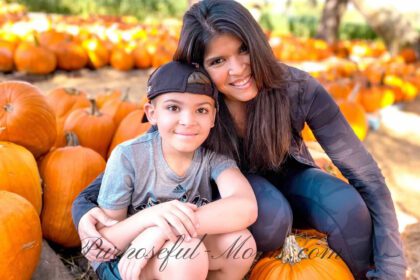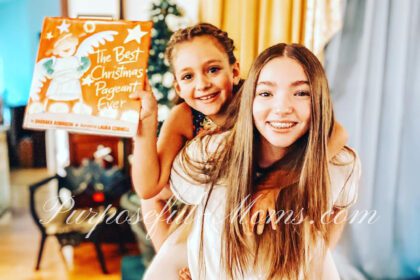Do you have a young child at home who you would like to teach to read to give an advantage to by giving him a head start before he heads off to kindergarten? Do you have a struggling young reader who you would love to help over the summer so she can tackle the new school year in the fall with confidence? Are you homeschooling and teaching your child to read for the very first time?
Yeah, I did, too!
I had never taught anyone how to read before. As a 4th and then 5th grade teacher at a private Christian school, my job was to teach reading comprehension, get my students thinking about the moral implications of the day’s reading selections, and develop critical thinking skills in my students while reading a passage.
My mother had taught me how to read by the time I was two and a half years old using SRA DISTAR by Siegfried Englemann, which my father’s cousin, a New York public school teacher, had given her because her school was throwing it out. I remember the spiral bound books and games my mother would play with me using the books.
(Affiliate links may be used in this post. You can view our full disclosure here.)
Right before Addie turned one, I saw a commercial for the Your Baby Can Read series. I bought it, and faithfully sat with Addie every day to watch the videos, play the games, look through the books, and review with the flash cards. Within 6 months, she did learn to recognize what each card said, but she was unable to translate her knowledge outside of the cards, videos, and books. (The series is now called Your Baby Can Learn.)

We began watching the LeapFrog: Letter Factory and in no time at all Addie began recognizing her letters and the sounds they made. By the time we began Kindergarten, she could read small words. The curriculum we were using at the time (Christian Liberty Academy Satellite Schools) had a reading program that required a lot of writing. She became frustrated, and reading became a dreaded subject for us both.
Mid-year, I switched her over to A Handbook for Reading, Phonics Textbook (A Beka Book Reading Program), which gave her the phonics foundation she needed. The pages had colors and fun pictures and the words were grouped in easy-to-read sections. But she still had no confidence in picking up a book and reading it.
Frustrated with reading and having passed my self-imposed timeline for teaching my daughter how to read, I began asking my father if he remembered which reading program my mother had used with me. After a few phone calls and emails back and forth, he remembered the initials SRA. I began researching and discovered that the program my mother used for me was still around, just under a different name- Teach Your Child to Read in 100 Easy Lessons. I ordered it and began working with Addie as soon as it came in.
The lessons are designed to be 20 minutes long- perfect for little ones who have short attention spans. Each lesson covers more than just reading. Children are taught to sound out words by “saying it slow” and then reading words by “saying it fast.” They also learn the concept of rhymes and how to make up rhyming words through daily oral exercises. Kids are also taught how to write the letters they are learning to sound out in each given lesson. Sound blends like “th” and “ch” are visually attached to teach children how the sound works.

Lessons are taken in small steps. For example, the first two lessons only teach the sounds for “m” and “s”. The type for the sounds to be read is nice and large making reading less intimidating for children. (That had been Addie’s biggest issue. She would only read books that had large type in them because she was afraid of reading small type words.)
As the book progressed, I found myself splitting lessons in half. They could be a bit intense the further into the book you journeyed. I had to remind myself that the goal was for my daughter to be able to read with confidence and understanding- not finish the book in 100 days.
One particular thing I loved about the book was that as we reached the last quarter of the book, the type gradually became smaller as the stories became longer. Addie never noticed the size change.
The evidence that she could finally read above her grade level with confidence and speed came one evening as I was preparing to review her Awana verses with her. I opened up to what I thought was a new verse, and she responded, “Oh, I already know that verse.” She then began reciting it to me complete with reference. I asked how she had learned it, and her answer was, “I read it, Mom.”

Within a few months of completing Teach Your Child to Read, she picked up our copy of Now We Are Six and read it in two days. I wasn’t sure about her understanding of the book, but when she told me about the poems she was reading, I knew she understood.
We used a combination of Teach Your Child to Read in 100 Easy Lessons, The Reading Lesson: Teach Your Child to Read in 20 Easy Lessons, and The Original McGuffey’s Eclectic Primer for Ian. As a mother, you realize that cookie cutter methods don’t work with kids. Boys and girls are naturally different and so are their learning styles. With Ian, I noticed that going to the same book day after day caused his interest to wane, so we changed it up often to keep his enthusiasm up.
At this point in our reading journey (Addie is finishing her sophomore year of high school, and Ian is finishing 7th grade), having enough books on hand is my biggest challenge. Amazon and our local library are life savers for a mom who is constantly having to replenish the reading supply.




